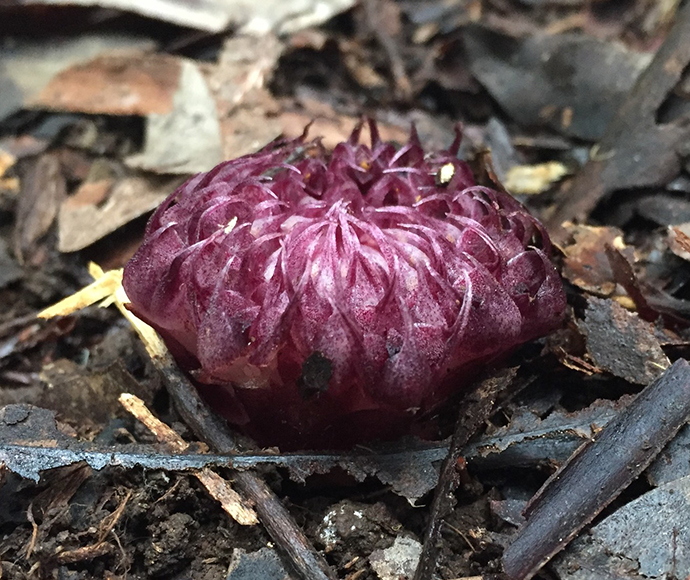Two English Springer Spaniels are helping find a very rare underground orchid called Rhizanthella, first discovered in 2016 in Barrington Tops National Park.

Detection dogs Missy and Taz of OWAD Environment were brought in by NSW Government’s Saving our Species (SoS) program and the National Parks and Wildlife Service (NPWS) after staff spent fruitless days searching for new orchid populations.
Discovered by a member of the public, the orchid is being investigated as a potential new species – and like other underground orchids, it’s difficult to track down.
Most of the plant grows underground, and only the flower is visible above ground – but even this is nearly always covered by leaf litter.
The clever canines – who usually search for koalas and quolls – were given just four flowers to learn to identify the scent during training.
Although Barrington Tops National Park was recently impacted by bushfires, the area with the Rhizanthella was unaffected. Field trials took place in early January, when Missy and Taz found remnants of the season’s last flowers hidden under leaf litter.
“This is the first time detection dogs have been used to find underground orchids, and it was a resounding success,” said Paul Hillier, Senior Project Officer, SoS.
“On top of both dogs locating the orchids in the known location, Missy may have also found the orchids growing in a new location.”
However, no flowers were seen at the new site, as the plant had finished flowering for the year.
The dynamic duo will return in winter when Rhizanthella flowers start emerging again, and search across more locations. The exercise is laying groundwork for finding other elusive species such as the threatened eastern underground orchid.
“This work opens up a doorway for us to come out and find other species that are also proving a challenge to work with and conserve.”
The SoS program is the NSW Government’s commitment to secure the future of NSW threatened plants and animals, with $100 million being invested in it over five years (2016 – 2021).







